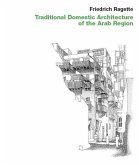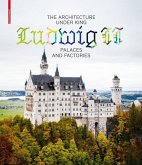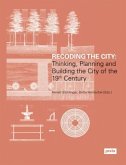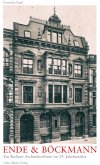In the 18th century the idea of the landscape garden,which had originated in England, spread allover Europe. The geometry of the Baroque parkwas abandoned in favour of a 'natural' design.At the same time the garden became the 'land ofillusion': Chinese pagodas, Egyptian tombs, andTurkish mosques, along with Gothic stables andGreek and Roman temples, formed a miniatureworld in which distance mingled with the past.The keen interest in a fairy-tale China, whichwas manifested not only in the gardens but alsoin the chinoiseries of the Rococo, abated inthe 19th century. The increasing expansion of theEuropean colonial powers was reflected in newexotic fashions. While in England it was primarilythe conquest of the Indian subcontinent that capturedthe imagination, for France the occupationof Algiers triggered an Orient-inspired fashionthat spread from Paris to encompass the entireContinent, and found its expression in paintings,novels, operas, and buildings. This 'Orient',which could notbe clearly defined geographically,was characterized by Islamic culture: It extendedaround the Mediterranean Sea from Constantinopleto Granada. There, it was the Alhambrathat fascinated writers and architects.The Islamic styles seemed especially appropriatefor 'buildings of a secular and cheerful character'. In contrast to ancient Egyptian buildingforms, which, being severe and monumental,were preferably used for cemetery buildings, prisonsor libraries, they promised earthly sensuouspleasures. The promise of happiness associatedwith an Orient staged by architectural means wasintended to guarantee the commercial success ofcoffeehouses and music halls, amusement parks,and steam baths.But even extravagant summer residences andmiddle-class villas were often built in faux-Orientalstyles: In Brighton, the Prince Regent George(George IV after 1820) built himself an Indian palace;in Bad Cannstatt near Stuttgart, a 'moorish'refuge was erected for Württemberg's King WilhelmI; and the Frenchtown of Tourcoing wasthe site of the Palais du Congo, a bombasticvilla in the Indian Moghul style that belonged toa wealthy perfume and soap manufacturer.Stefan Koppelkamm studied at the Gesamthochschulein Kassel, and after a longer stay inthe USA he now lives in Berlin and teaches communicationdesign at the Kunsthochschule Berlin-Weißensee. Since the publication of his bookGewächshäuser und Wintergärten im 19. Jahrhundert(Stuttgart, 1981), he has repeatedly engagedwith historic and current aspects of architecture.
Hinweis: Dieser Artikel kann nur an eine deutsche Lieferadresse ausgeliefert werden.
Hinweis: Dieser Artikel kann nur an eine deutsche Lieferadresse ausgeliefert werden.








